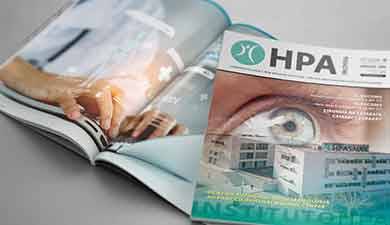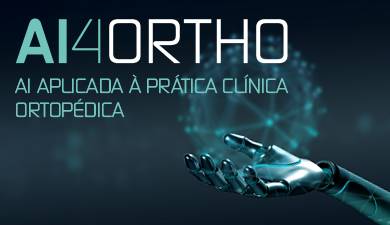Ft. Rui Cintra
Physiotherapist

Dr. Carlos Glória
Specialist in Pneumology and Intensive Care

Drª. Lígia Pires
Pneumologista

Respiratory Rehabilitation Program
Empowerment in chronic obstructive pulmonary disease
HPA Magazine 8
The benefits of exercise on physical and mental health are increasingly well documented, and are considered a factor in health and healthy aging. Likewise, exercise is now considered to be a proven resource in the approach and management of chronic non-communicable diseases, such as Chronic Obstructive Pulmonary Disease, as it is considered to be just as important and beneficial a therapeutic entity as a pharmacological approach.

Chronic Obstructive Pulmonary Disease (COPD) is characterised by poor airflow, associated with inflammation of the airways with increased production of mucus. Those afflicted with COPD frequently complain of shortness of breath with light physical activity, cough and sputum. The reason for the physical deconditioning with everyday activities, even for the easiest or least demanding, is due to the fact that COPD also produces alterations in the muscle fibres, especially in the quadriceps.
The principal cause of COPD is tobacco smoke, although there are other factors that contribute to the emergence and exacerbation of the disease, such as: smoke from fireplaces, exposure to pollutants in the workplace, air pollution and genetic information. The diagnosis is confirmed by a Pulmonary Function Test (PFT), an exam that makes a functional evaluation of the lungs.
The aging of the world population is a factor that contributes on a large scale to the evolution of COPD, now considered to be the 4th most common cause of death, and it is expected that in 2020 it will become the 3rd most common cause of death and morbidity of the population, with high costs for health policies.
The prognosis of death by COPD increases with age. However, other factors also contribute to this outcome: poor results of the PTFs, smoking, low oxygen levels in the blood, chronic hypersecretion, shortness of breath, diminished capacity for regular exercise, reduction of physical activity, decreased muscle mass and strength, low body mass index and excessive weight loss.
There are two paths of intervention strategies for the treatment and stabilisation of COPD: pharmacological and non-pharmacological, respectively, inhaled therapeutic that helps dilate the airways and structured physical exercise, both with the same degree of evidence in regard to results.
The best candidates for the Respiratory Rehabilitation Programs, i.e. those who can have the greatest benefits, are those with the following characteristics: candidates with the most severe signs and symptoms of the disease, or with an obvious annual worsening in the PTFs, with chronic hypersecretion, low level of physical activity and consequently with muscle weakness and low ventilatory reserve. Besides this, the comorbidities that are often present in these sufferers, such as cardiovascular diseases, diabetes, osteoporosis and peripheral vascular disease also benefit from physical exercise.
The Respiratory Rehabilitation Programs are divided into two nuclear components: structured physical exercise and educational sessions. The structured physical exercise conforms to an initial assessment to define the training plan and respective progress, permanently monitored during the sessions. The exercise should include aerobic/endurance training and strength/resistance training. The purpose of the education sessions is to answer any questions and give information about subjects related to the disease and its associated incapacity, contributing towards better self-management by the patient.
The Respiratory Rehabilitation Programs are intended for all stages of the disease, as long as the restrictions in participation of activities related to the exercise or limitations in daily physical activity are observed. The main object of endurance training is to improve aerobic capacity and consequently performing everyday activities, expending less energy and suffering less shortness of breath. This type of training is normally done on a treadmill or bicycle.
In turn, strength training is based on localised exercises intended to work specific muscles, recommended when there is clearly demonstrable diminished muscular strength in the upper and/or lower limbs, and, again, in the performance of everyday activities. Very often, this type of training is better tolerated by more serious sufferers and with less aerobic capacity. Nevertheless, the combination of the two training methods seems to be the ideal for getting the most effective results.
The Respiratory Rehabilitation Programs should last for a minimum of 4 to 7 weeks (short programs) and can extend up to 12 weeks (long programs), given 2 to 3 times a week, for 90 minutes per session. The sessions are organised in 4 phases: warm-up, exercise that includes a period of endurance training and a period of strength training, and ending with a cool-down period and stretching of the main structures used in the exercises.
The Hospital Particular de Alvor has a team that specialises in Respiratory Rehabilitation Programs, given in the Physiotherapy gymnasium, in groups of 5 people, every afternoon from Monday to Friday. An education session with a specific theme is given every two weeks. At this time, this is the only structured program available south of Lisbon.








